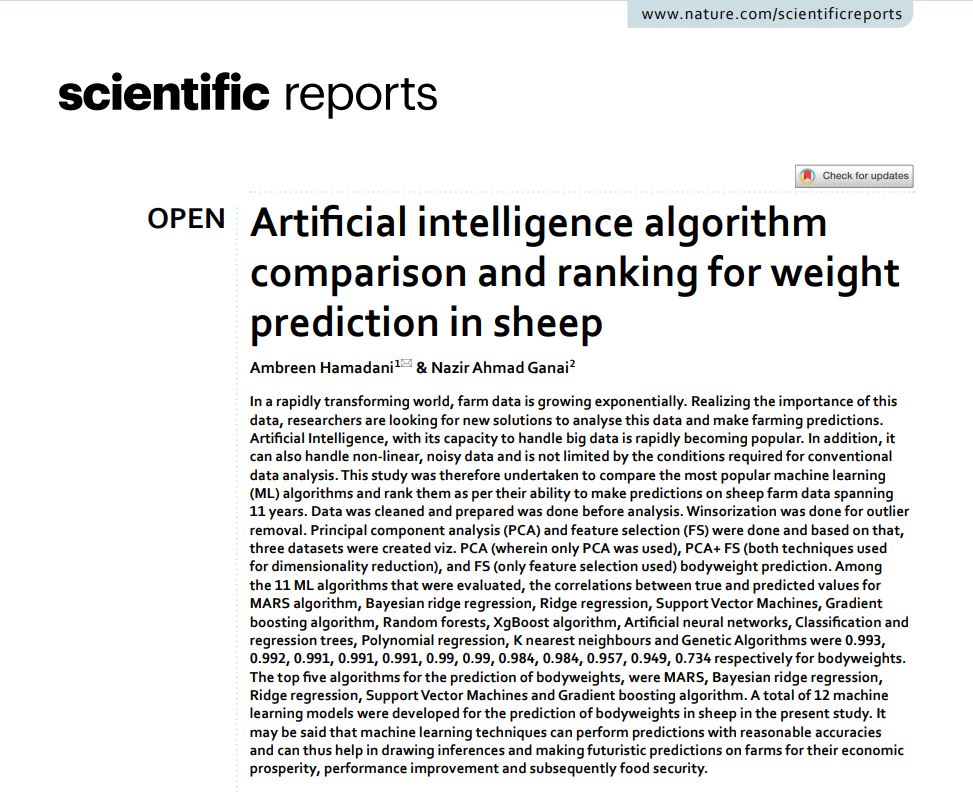Scientific Reports volume 13, Article number: 13242 (2023)
In a rapidly transforming world, farm data is growing exponentially. Realizing the importance of this data, researchers are looking for new solutions to analyse this data and make farming predictions. Artificial Intelligence, with its capacity to handle big data is rapidly becoming popular. In addition, it can also handle non-linear, noisy data and is not limited by the conditions required for conventional data analysis.
This study was therefore undertaken to compare the most popular machine learning (ML) algorithms and rank them as per their ability to make predictions on sheep farm data spanning 11 years. Data was cleaned and prepared was done before analysis. Winsorization was done for outlier removal. Principal component analysis (PCA) and feature selection (FS) were done and based on that, three datasets were created viz. PCA (wherein only PCA was used), PCA+ FS (both techniques used for dimensionality reduction), and FS (only feature selection used) bodyweight prediction.
Among the 11 ML algorithms that were evaluated, the correlations between true and predicted values for MARS algorithm, Bayesian ridge regression, Ridge regression, Support Vector Machines, Gradient boosting algorithm, Random forests, XgBoost algorithm, Artificial neural networks, Classification and regression trees, Polynomial regression, K nearest neighbours and Genetic Algorithms were 0.993, 0.992, 0.991, 0.991, 0.991, 0.99, 0.99, 0.984, 0.984, 0.957, 0.949, 0.734 respectively for bodyweights. The top five algorithms for the prediction of bodyweights, were MARS, Bayesian ridge regression, Ridge regression, Support Vector Machines and Gradient boosting algorithm.
A total of 12 machine learning models were developed for the prediction of bodyweights in sheep in the present study. It may be said that machine learning techniques can perform predictions with reasonable accuracies and can thus help in drawing inferences and making futuristic predictions on farms for their economic prosperity, performance improvement and subsequently food security.
Source : https://www.nature.com/articles/s41598-023-40528-4#Fig1







